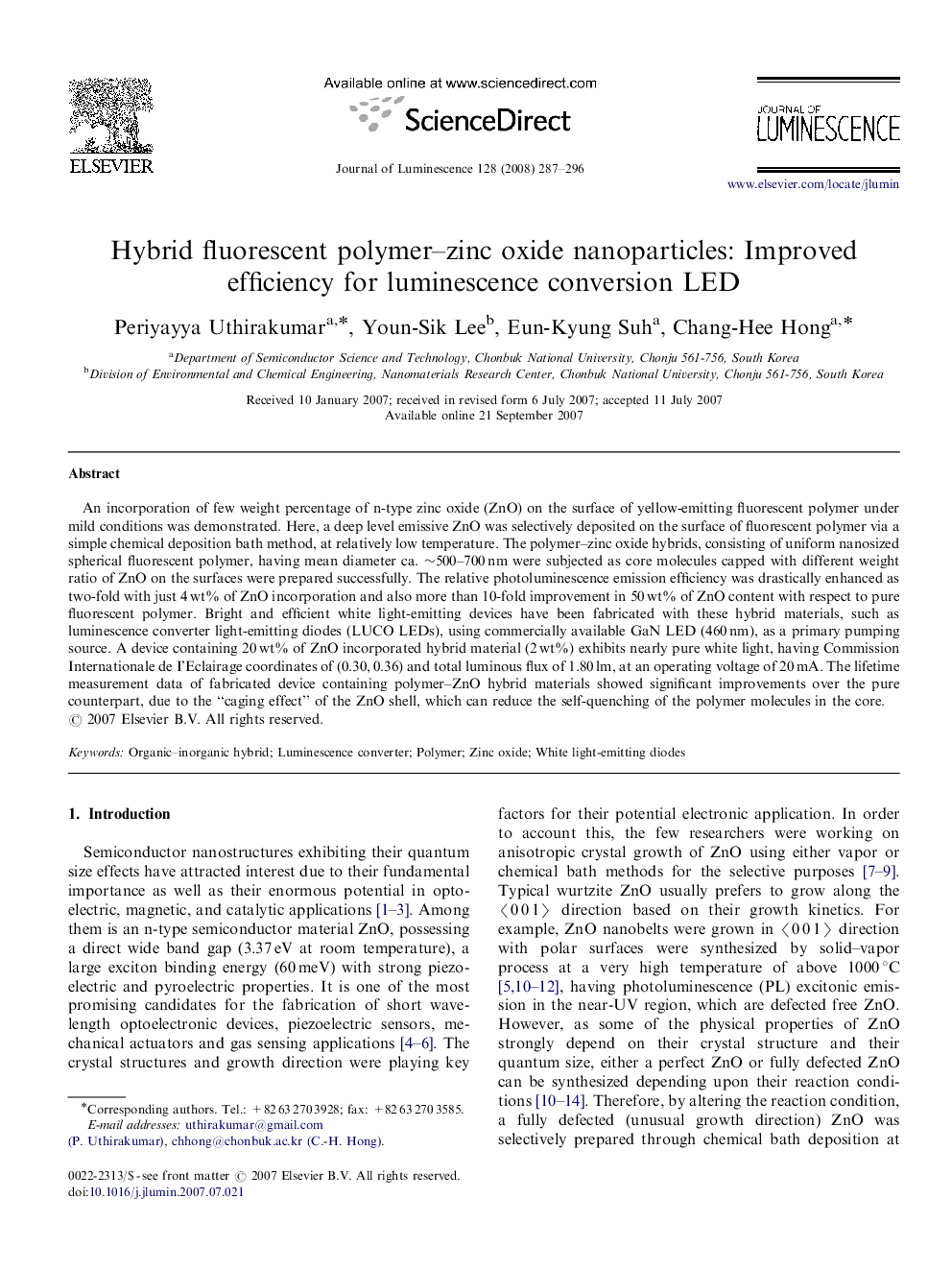| Article ID | Journal | Published Year | Pages | File Type |
|---|---|---|---|---|
| 5403786 | Journal of Luminescence | 2008 | 10 Pages |
Abstract
An incorporation of few weight percentage of n-type zinc oxide (ZnO) on the surface of yellow-emitting fluorescent polymer under mild conditions was demonstrated. Here, a deep level emissive ZnO was selectively deposited on the surface of fluorescent polymer via a simple chemical deposition bath method, at relatively low temperature. The polymer-zinc oxide hybrids, consisting of uniform nanosized spherical fluorescent polymer, having mean diameter ca. â¼500-700 nm were subjected as core molecules capped with different weight ratio of ZnO on the surfaces were prepared successfully. The relative photoluminescence emission efficiency was drastically enhanced as two-fold with just 4 wt% of ZnO incorporation and also more than 10-fold improvement in 50 wt% of ZnO content with respect to pure fluorescent polymer. Bright and efficient white light-emitting devices have been fabricated with these hybrid materials, such as luminescence converter light-emitting diodes (LUCO LEDs), using commercially available GaN LED (460 nm), as a primary pumping source. A device containing 20 wt% of ZnO incorporated hybrid material (2 wt%) exhibits nearly pure white light, having Commission Internationale de I'Eclairage coordinates of (0.30, 0.36) and total luminous flux of 1.80 lm, at an operating voltage of 20 mA. The lifetime measurement data of fabricated device containing polymer-ZnO hybrid materials showed significant improvements over the pure counterpart, due to the “caging effect” of the ZnO shell, which can reduce the self-quenching of the polymer molecules in the core.
Related Topics
Physical Sciences and Engineering
Chemistry
Physical and Theoretical Chemistry
Authors
Periyayya Uthirakumar, Youn-Sik Lee, Eun-Kyung Suh, Chang-Hee Hong,
